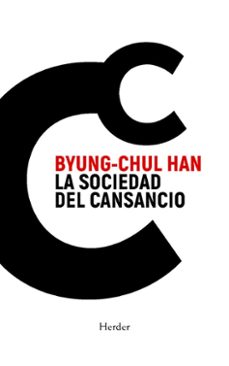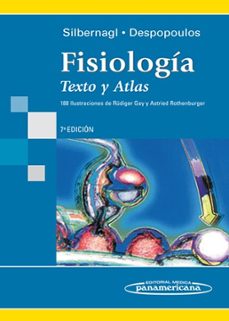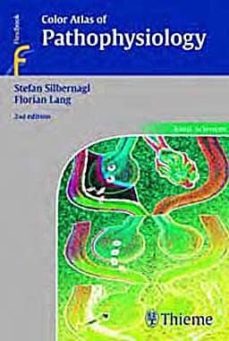Imprescindibles
Más vendidos Libros más leídos eBooks más leídos Todos los libros Todos los libros Autores destacados Series y sagas
Recomendados Libros recomendados Autores destacados Libros que inspiran Vidas con historia LGTBIQ+ English books
Ficción
Literatura Contemporánea Estudios literarios Clásicos Cuentos Poesía Teatro Libros de bolsillo Sagas literarias
Géneros literarios Novela romántica y erótica Novela negra Novela histórica Narrativa fantástica Novela de ciencia ficción Novela de terror Narrativa de humor Narrativa de viajes
No Ficción
Ciencias y tecnología Biología Ciencias Ciencias naturales Divulgación científica Informática Ingeniería Matemáticas Medicina Salud y dietas Formación Idiomas Estilo de vida Libros de Cocina Guías de viaje Narrativa de viajes Deportes Libros de Juegos Manualidades
Humanidades Autoayuda y espiritualidad Ciencias humanas Derecho Economía y Empresa Psicología y Pedagogía Filosofía Sociología Filología Biblioteconomía Estudios filológicos Estudios lingüísticos Estudios literarios Historia y crítica de la Literatura
Infantil
Juvenil
#Jóvenes lectores Narrativa juvenil Clásicos adaptados Libros Wattpad Libros Booktok Libros de influencers Libros de Youtubers Libros Spicy Juveniles Libros LGTBIQ+ Temas sociales Libros ciencia ficción Libros de acción y aventura Cómic y Manga Juvenil Cómic Juvenil Manga Shonen Manga Shojo Autores destacados Jennifer L. Armentrout Eloy Moreno Nerea Llanes Hannah Nicole Maehrer
Libros de fantasía Cozy Fantasy Dark academia Hadas y Fae Romantasy Royal Fantasy Urban Fantasy Vampiros y hombres lobo Otros Misterio y terror Cozy mistery Policiaca Spooky Terror Thriller y suspense Otros
Libros románticos y de amor Dark Romance Clean Romance Cowboy Romance Mafia y amor Romance dramatico Romance dramatico Romcom Sport Romance Otros Clichés Enemies to Lovers Friends to Lovers Hermanastros Slow Burn Fake Dating Triángulo amoroso
Cómic y Manga
Novela gráfica Novela gráfica americana Novela gráfica europea Novela gráfica de otros países Personajes, series y sagas Series y sagas Star Wars Superhéroes Cómics DC Cómics Marvel Cómics otros superhéroes Cómics Valiant
eBooks
Literatura Contemporánea Narrativa fantástica Novela de ciencia ficción Novela de terror Novela histórica Novela negra Novela romántica y erótica Juvenil Más de 13 años Más de 15 años Infantil eBooks infantiles
Humanidades Autoayuda y espiritualidad Ciencias humanas Economía y Empresa Psicología y Pedagogía Filosofía Historia Historia de España Historia Universal Arte Cine Música Historia del arte
Ciencia y tecnología Ciencias naturales Divulgación científica Medicina Salud y dietas Filología Estudios lingüísticos Estudios literarios Historia y crítica de la Literatura Estilo de vida Cocina Guías de viaje Ocio y deportes
STEFAN SILBERNAGL
Recibe novedades de STEFAN SILBERNAGL directamente en tu email
Filtros
Del 1 al 6 de 6
Editorial Médica Panamericana S.A. 9788479034443
Aprender la fisiología implica tener una visión general acerca del cuerpo, sus sistemas aparatos los numerosos procesos que los mantienen en funcionamiento. La importancia de esta disciplina se basa en la interrelación de sus contenidos con los de la fisiopatología la medicina interna, su dominio resulta central para una correcta tarea médica. Por ser una ciencia en permanente progreso, sus conocimientos se han extendido profundizado en forma considerable, en especial gracias la aplicación de técnicas biomoleculares genéticas a los avances logrados en la descodificación de las funciones cerebrales. Esto determinó la ampliación el mayor énfasis en el desarrollo de temas como la coagulación sanguínea, la distribución del agua, la regulación del peso corporal, la memoria los receptores del sonido. Los aspectos sobresalientes de esta obra son: Su claridad, con la presentación de cada tema en unidades formadas por texto figuras enfrentados. Las descripciones claras que facilitan el entendimiento de las interrelaciones complejas. La coherencia didáctica entre los objetivos, la organización, el texto las ilustraciones. La correlación clínica reflejada en los comentarios clínicos fisiopatológicos que se destacan con una banda lateral azulada palabras clave presentadas al pie de página en tipografía azul.
Ver más
Tapa blanda
THIEME 9783135450070
Praise for the previous edition: This atlas provides a great way for students to review crucial and vital processes, perhaps before an exam or in simple review. This is a great book for any student in the medical field.--Doody Enterprises, Inc. The seventh edition of this classic atlas makes mastering large amounts of complex information much easier. It provides a thorough review of everything medical students need to know to pass their pre-clinical physiology exams. Section topics include the nerves and muscles, blood, respiration, the cardiovascular system, digestion, and reproduction. This revised and expanded edition also features entirely new material on ageing, obesity, the urinary bladder, and cell physiology of the skeletal muscles. The many user-friendly features of this book include: Almost 200 outstanding full-color illustrations and 10 new color platesSide-by-side images with callouts Visual highlighting of clinically relevant and pathophysiologic information with clinical key words on every pageIn a compact, user-friendly format, Color Atlas of Physiology, Seventh Edition , is an invaluable and ideal study guide and reference for medical students preparing for their physiology examinations.
Ver más
Tapa blanda
THIEME 9783131165527
This is the second, revised edition of the highly successful Color Atlas of Pathophysiology, which clearly describes the disturbed physiologic processes leading to dysfunction and disease. Readers can study all aspects of pathophysiology for the most important disorders on 190 descriptive color plates. Each color plate is accompanied by a concise, explanatory text on a facing page. Special emphasis is placed on identifying causal relationships, and brief reviews of basic physiology are provided where needed for a better understanding. Complex relationships are made readily understandable through the methodical organization of the color plates and the use of standardized colors. Medical students will find this exceptional text invaluable for preparing for exams and an ideal companion throughout their clinical studies. For physicians and allied health professionals interested in refreshing their knowledge of pathophysiologic processes, this book will serve as a key reference.
Ver más
Otros
THIEME 9783135450063
Now in its 6th edition, the "Color Atlas of Physiology" still convinces its readers. Whereas many large textbooks on physiology leave students floundering in a wealth of detail, this color atlas presents the subject in a concise, illustrative, and comprehensible way.It contains everything that medical students need to know to pass their pre-clinical physiology exams. For this edition, all of the 188 color plates and their accompanying texts have been revised and updated, taking into account the latest developments in research. All topics in the book are cross-referenced, presenting the subject as a series of interconnected processes. Blue highlights in and keywords below the texts display the most important clinical applications and pathophysiologic links.For 25 years, the authors and illustrators have improved and optimized this color atlas, making it the ideal study guide when reviewing the subject before an exam and a companion to look up the basics of physiology during clinical studies and practice.
Ver más
Tapa blanda
ELSEVIER ESPAÑA, S.A. 9788481745313
Tapa blanda
Del 1 al 6 de 6































